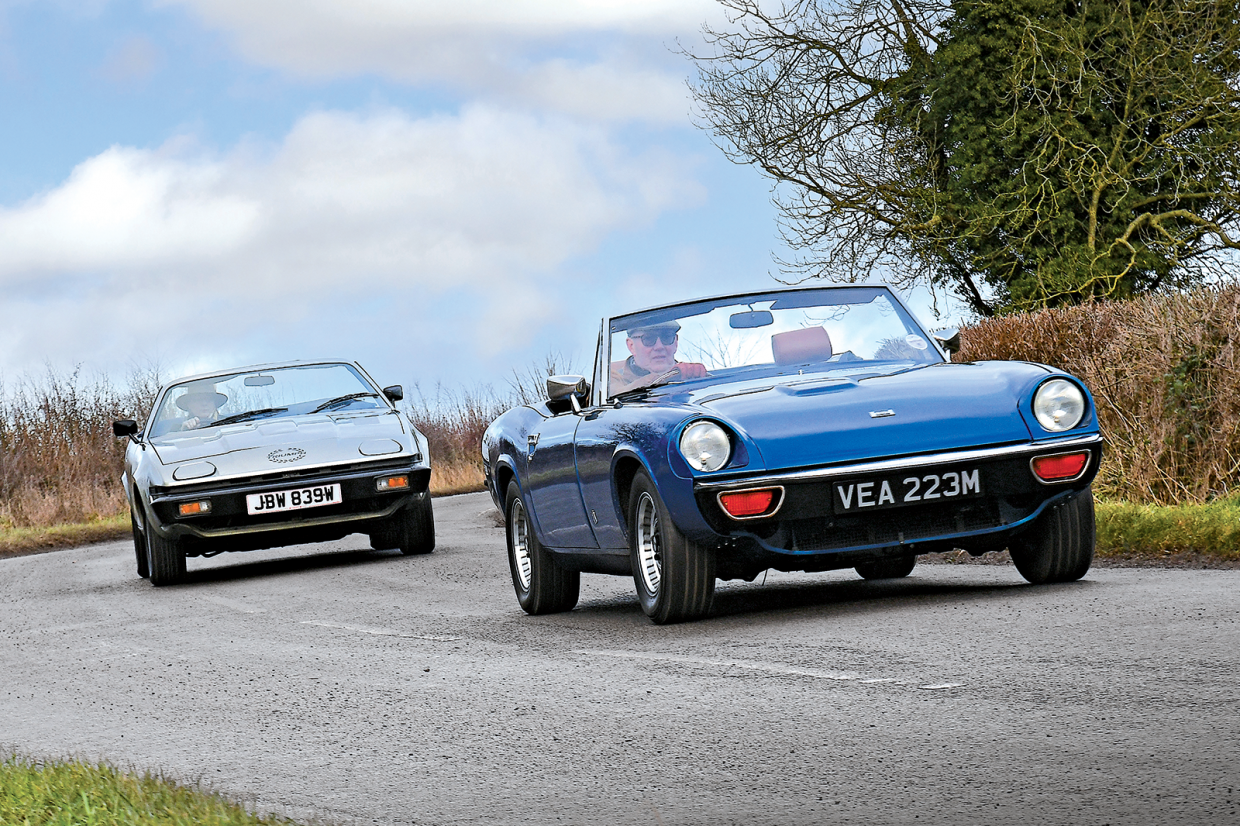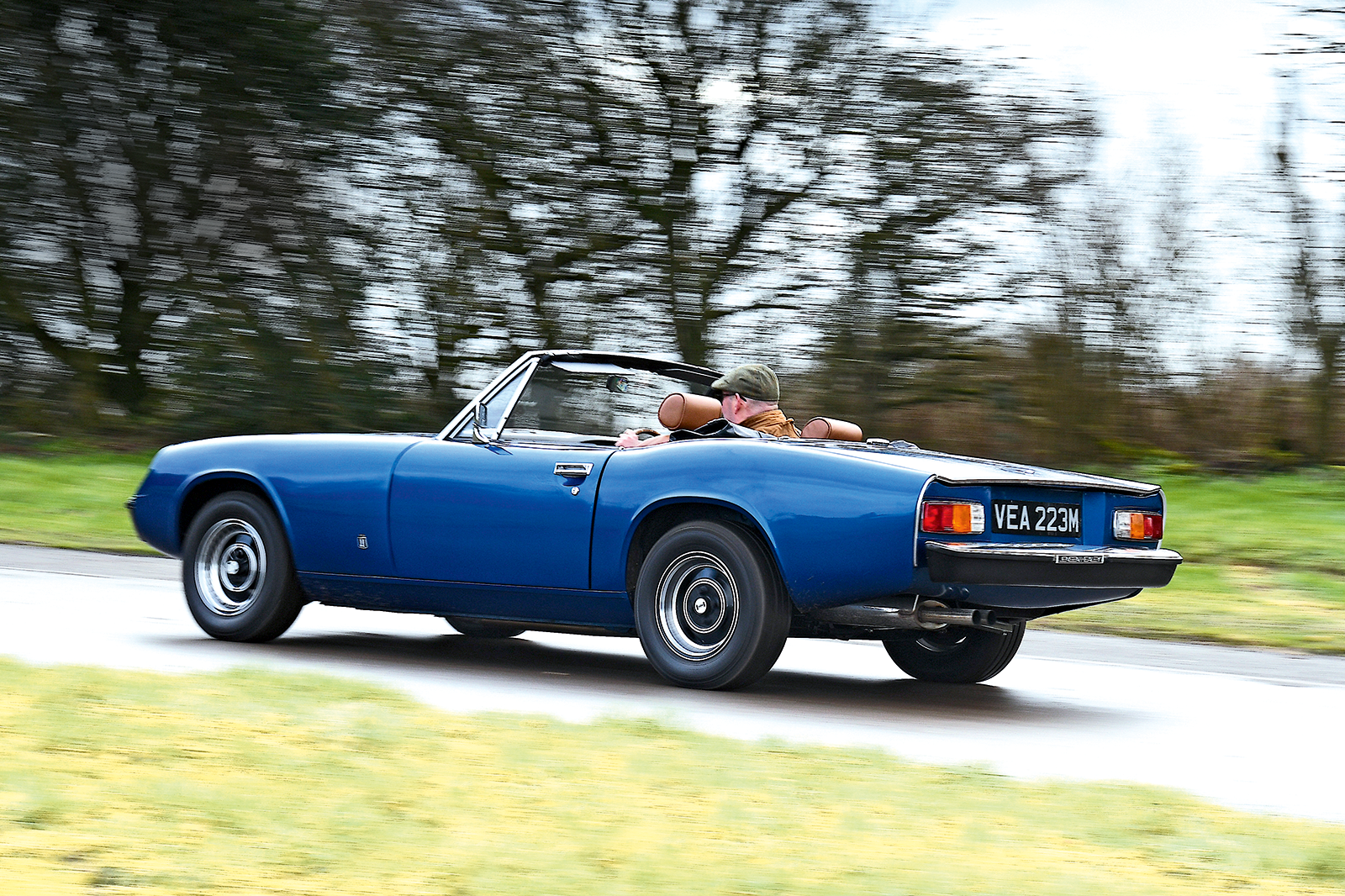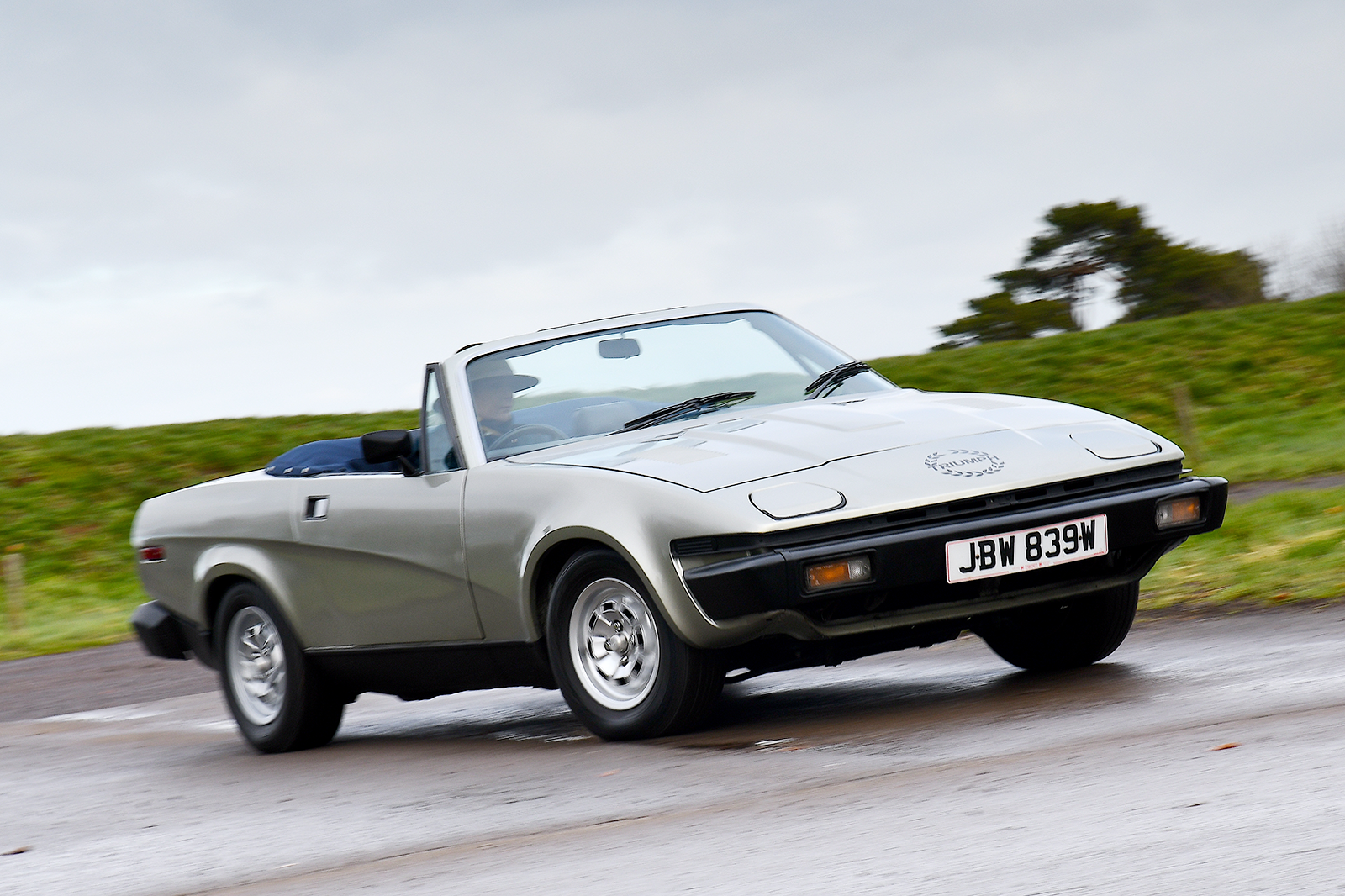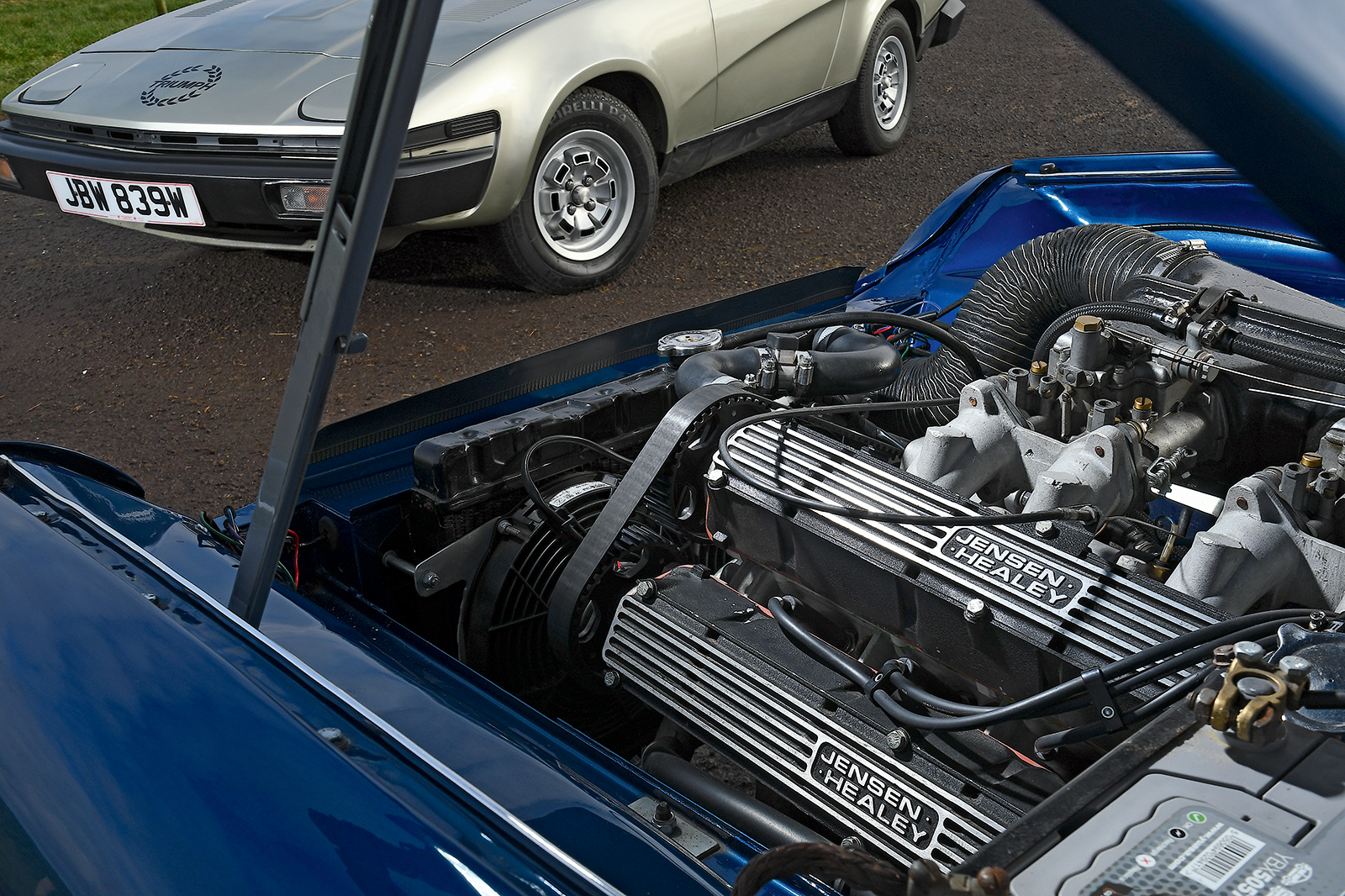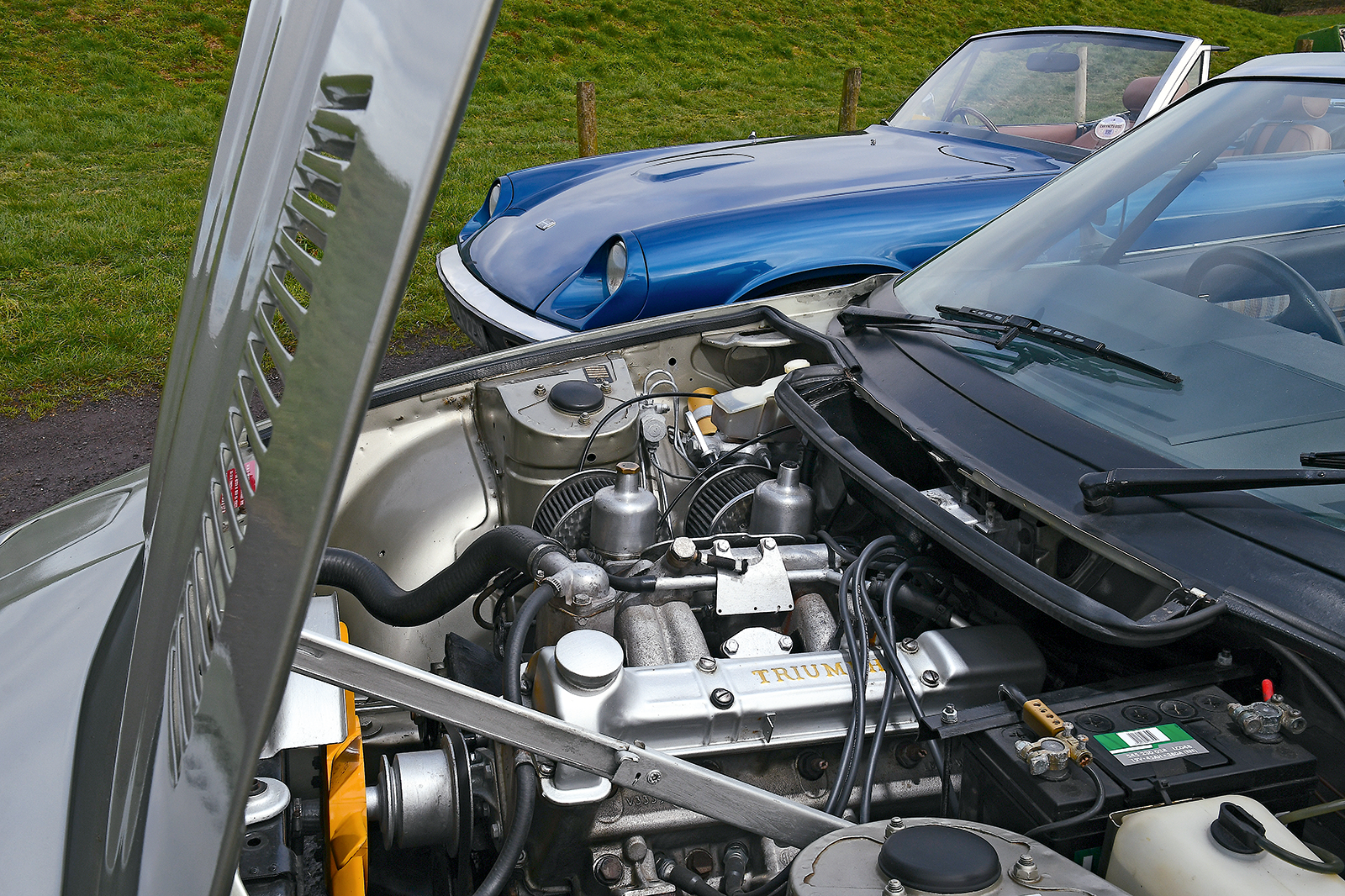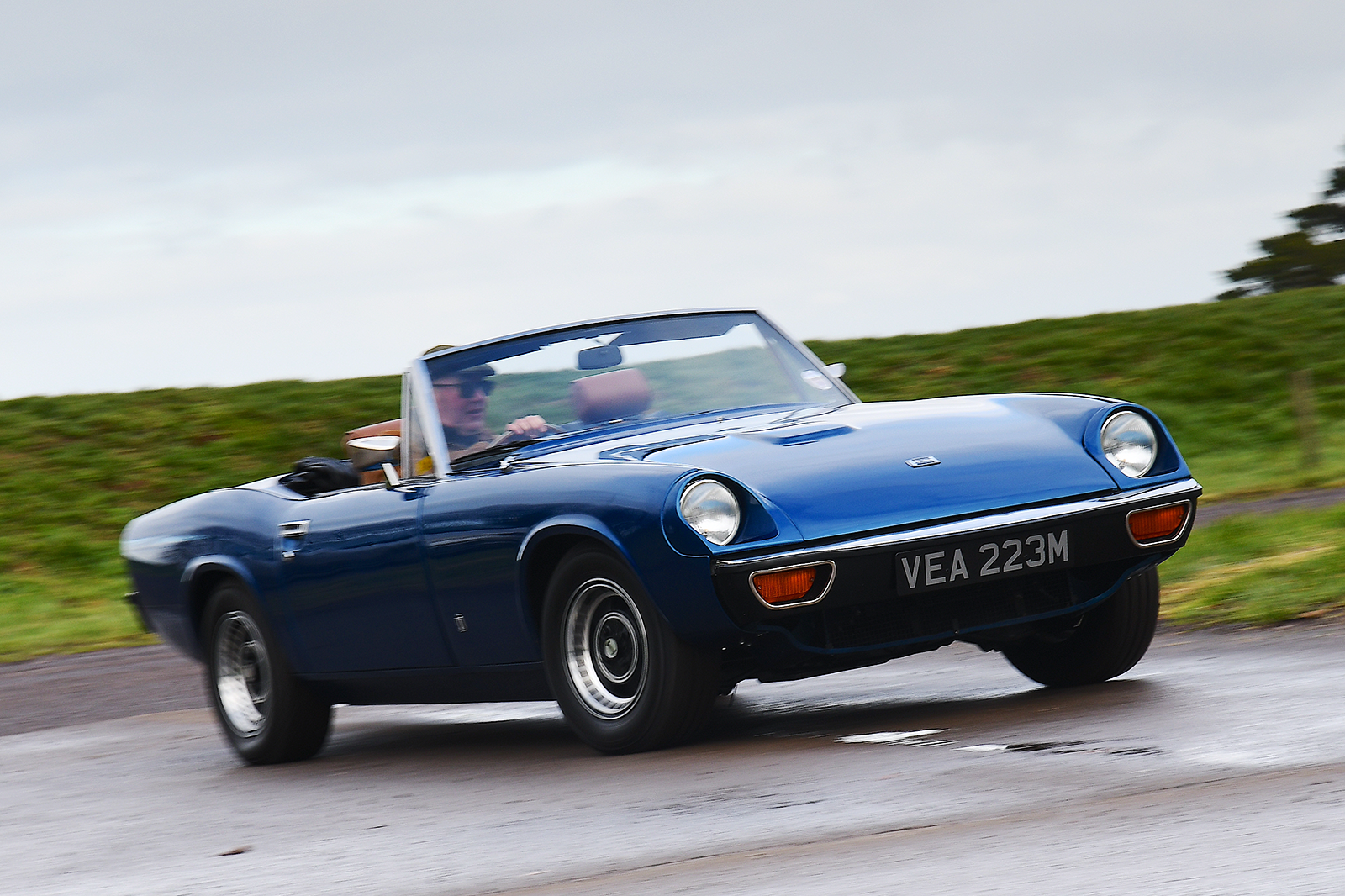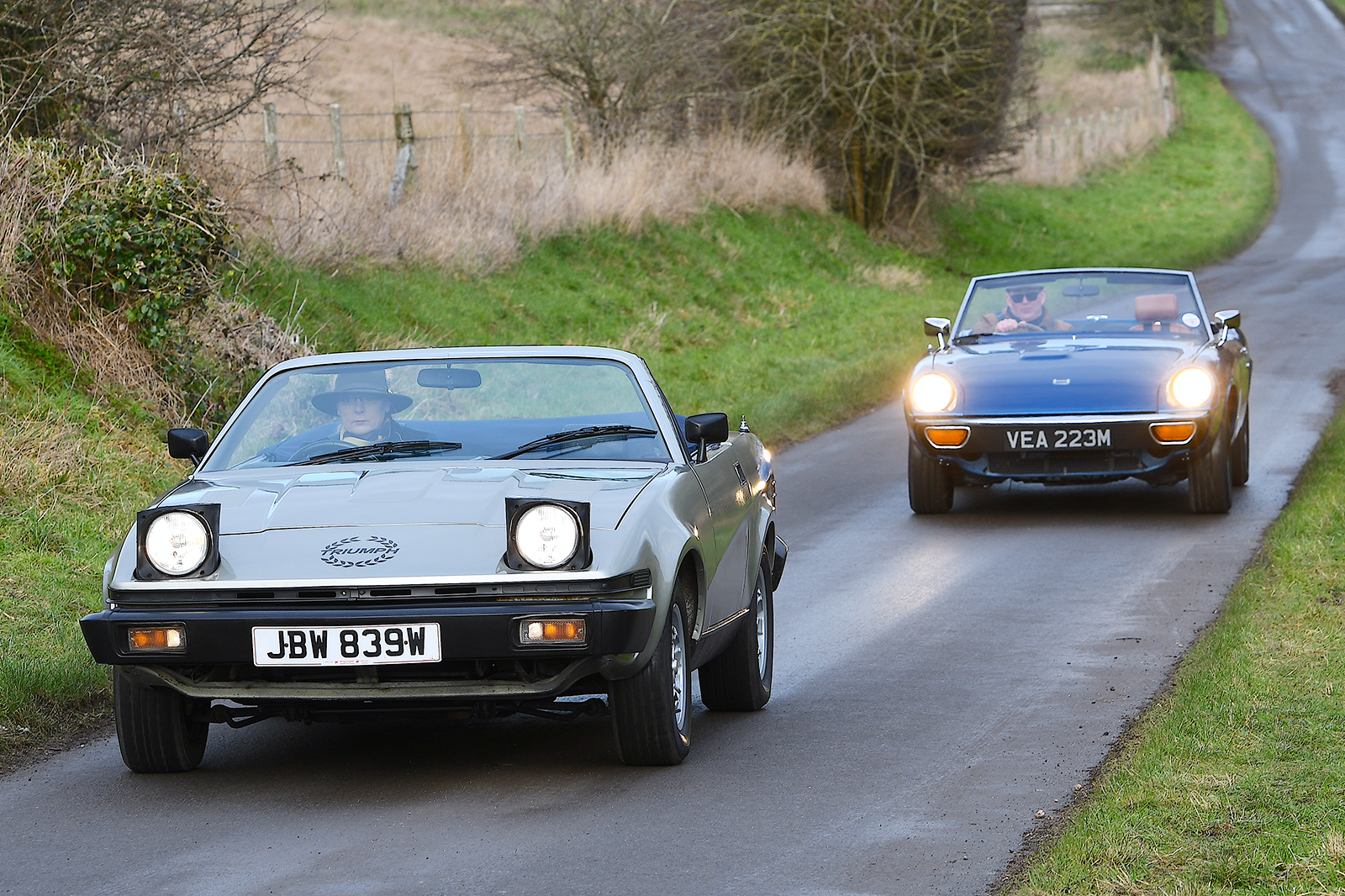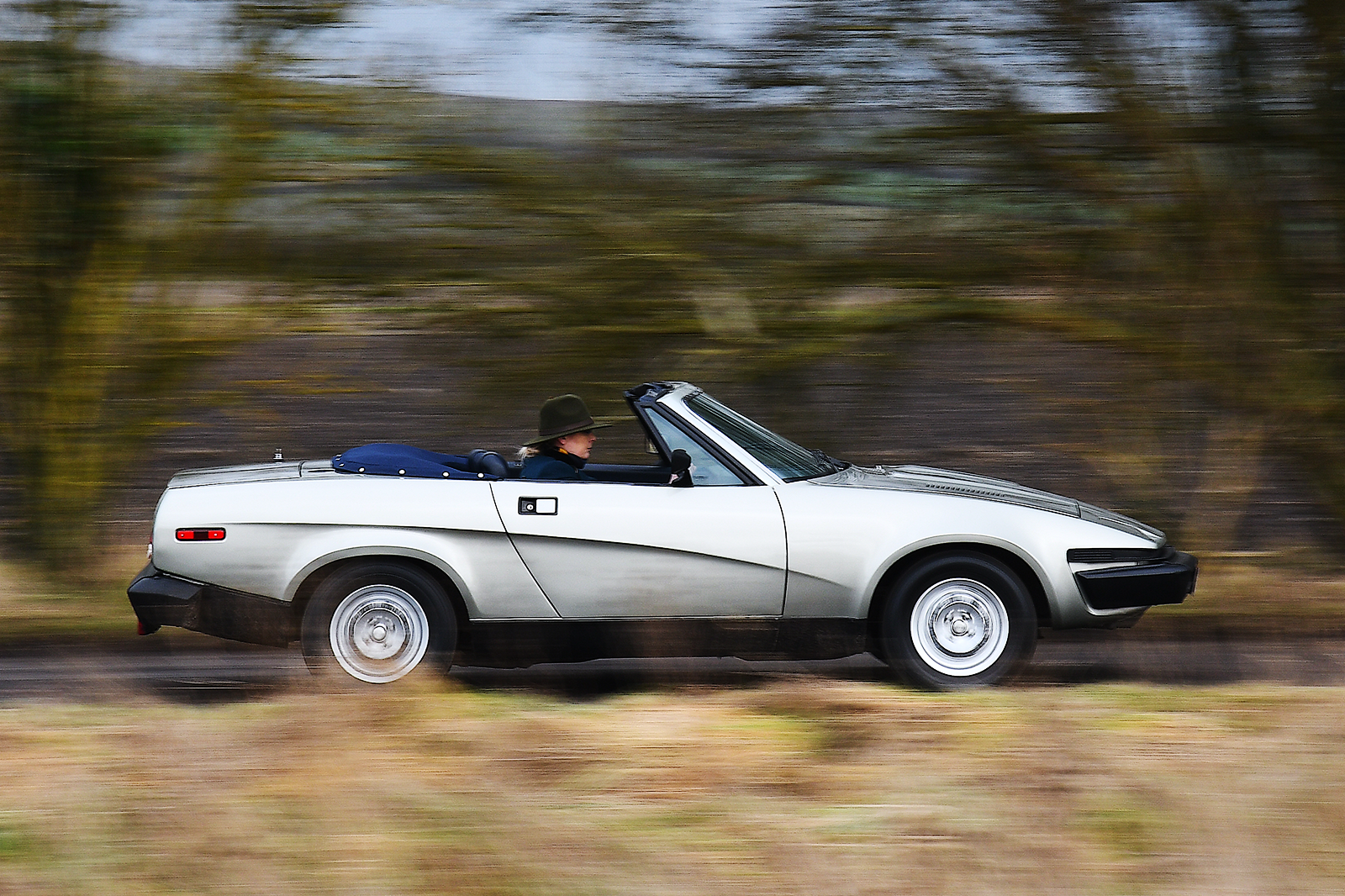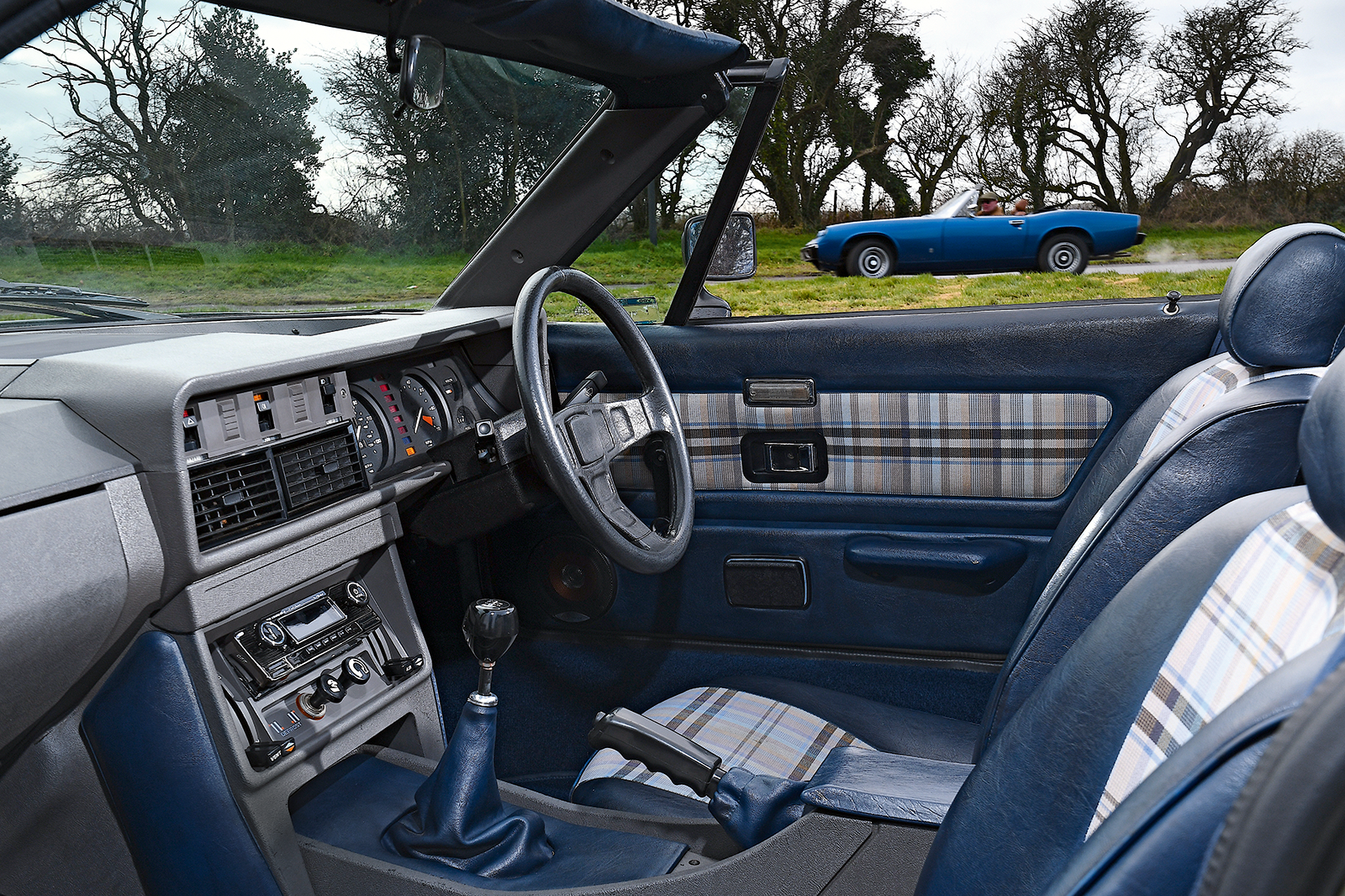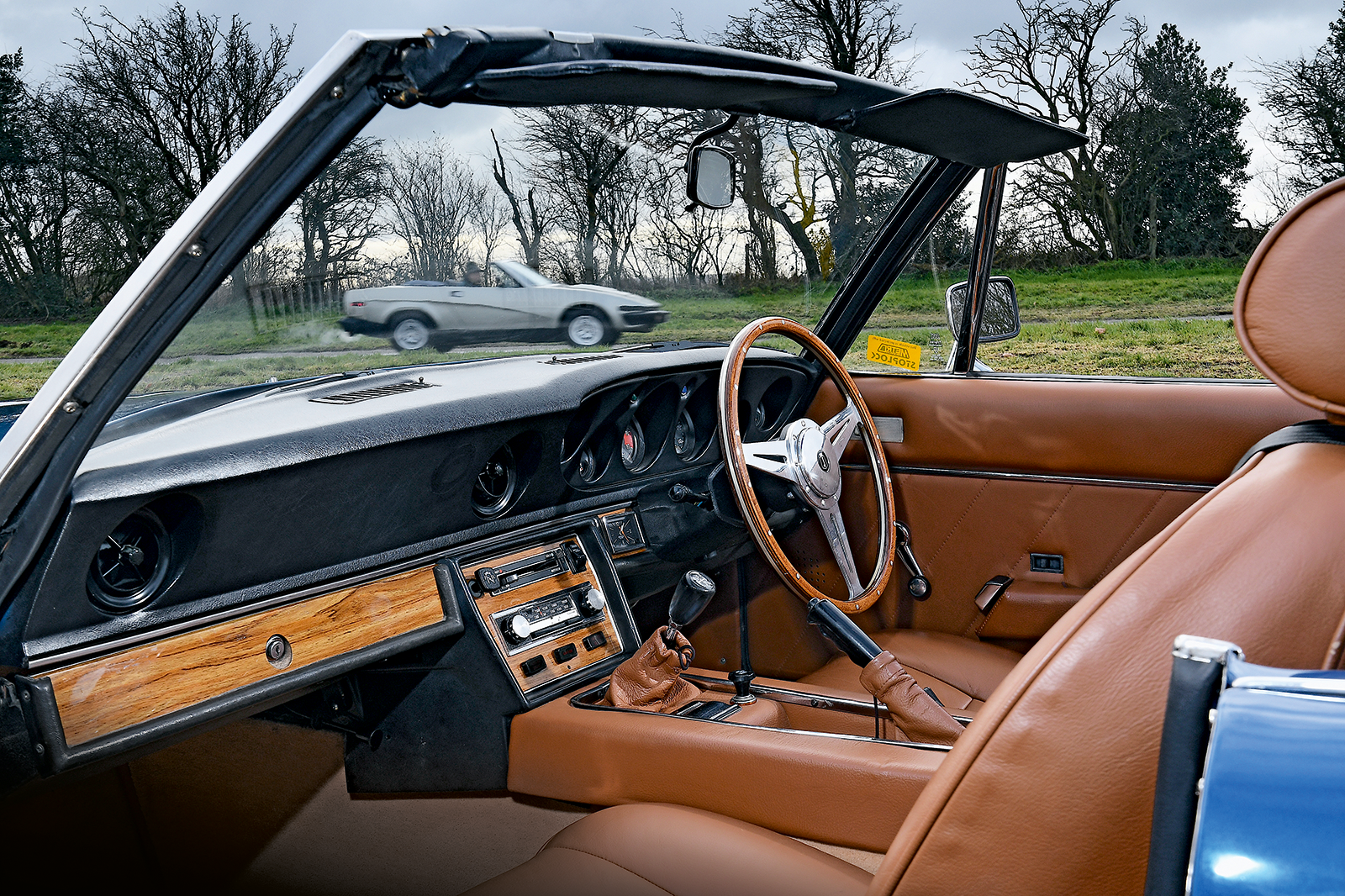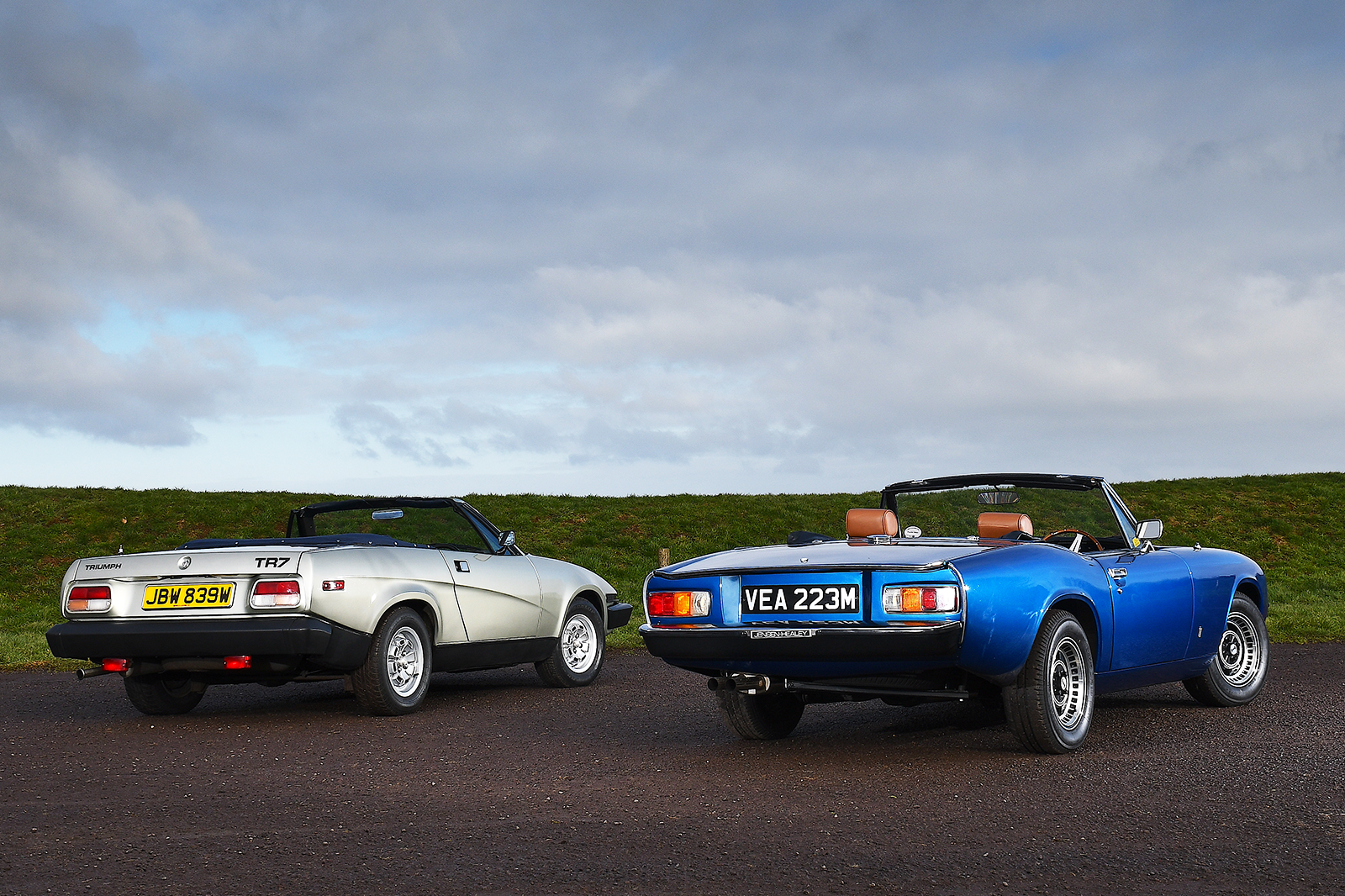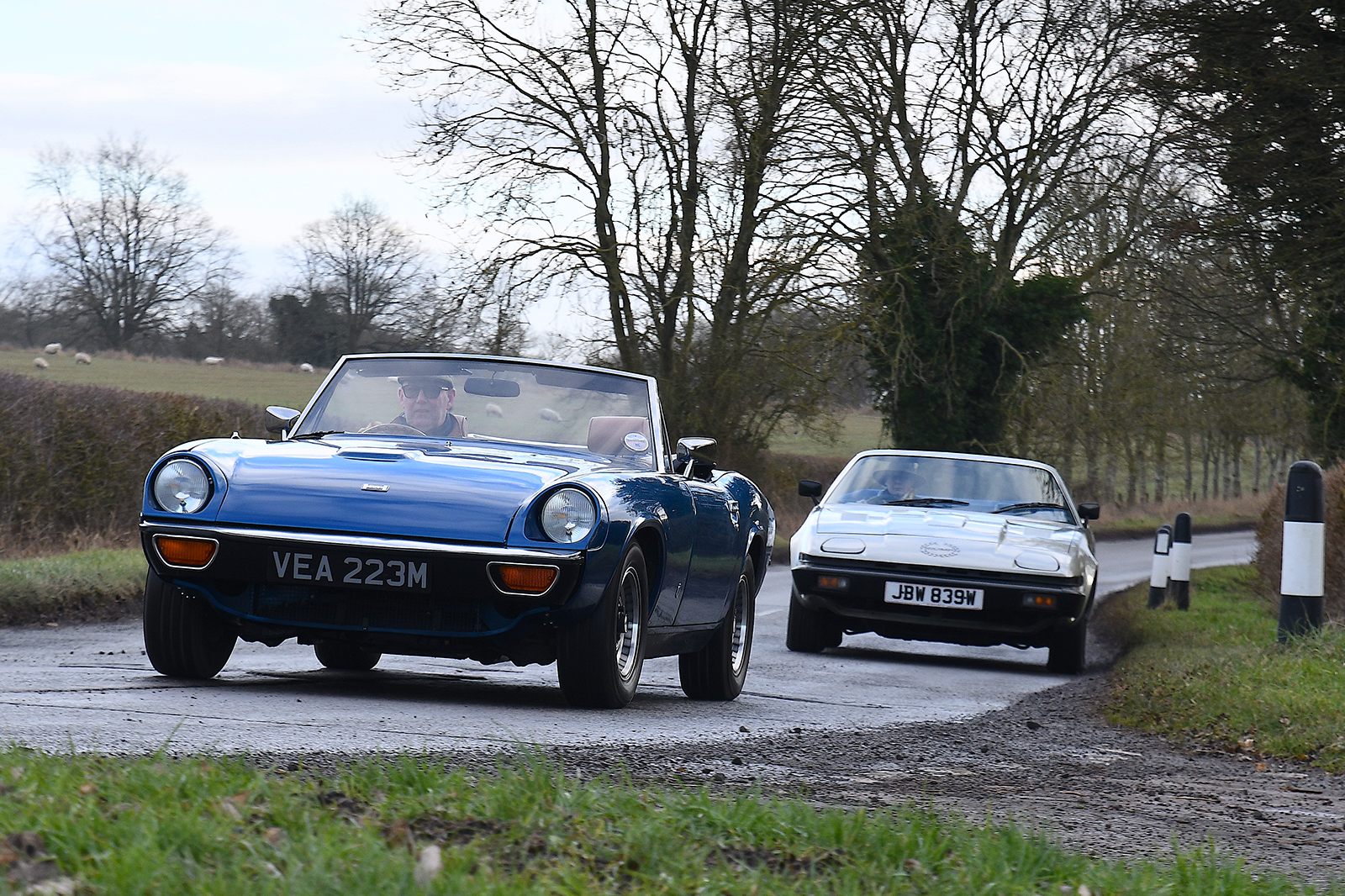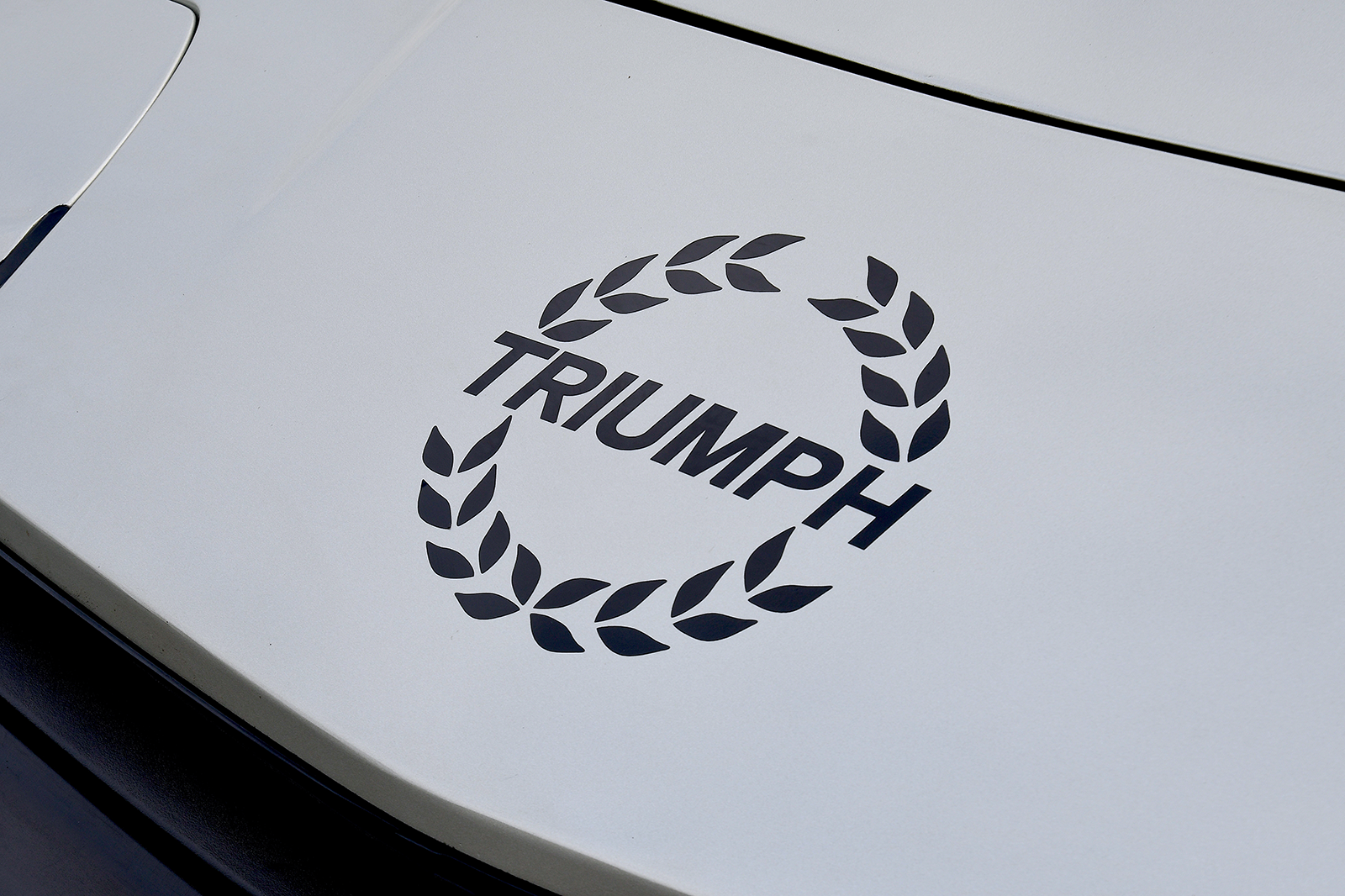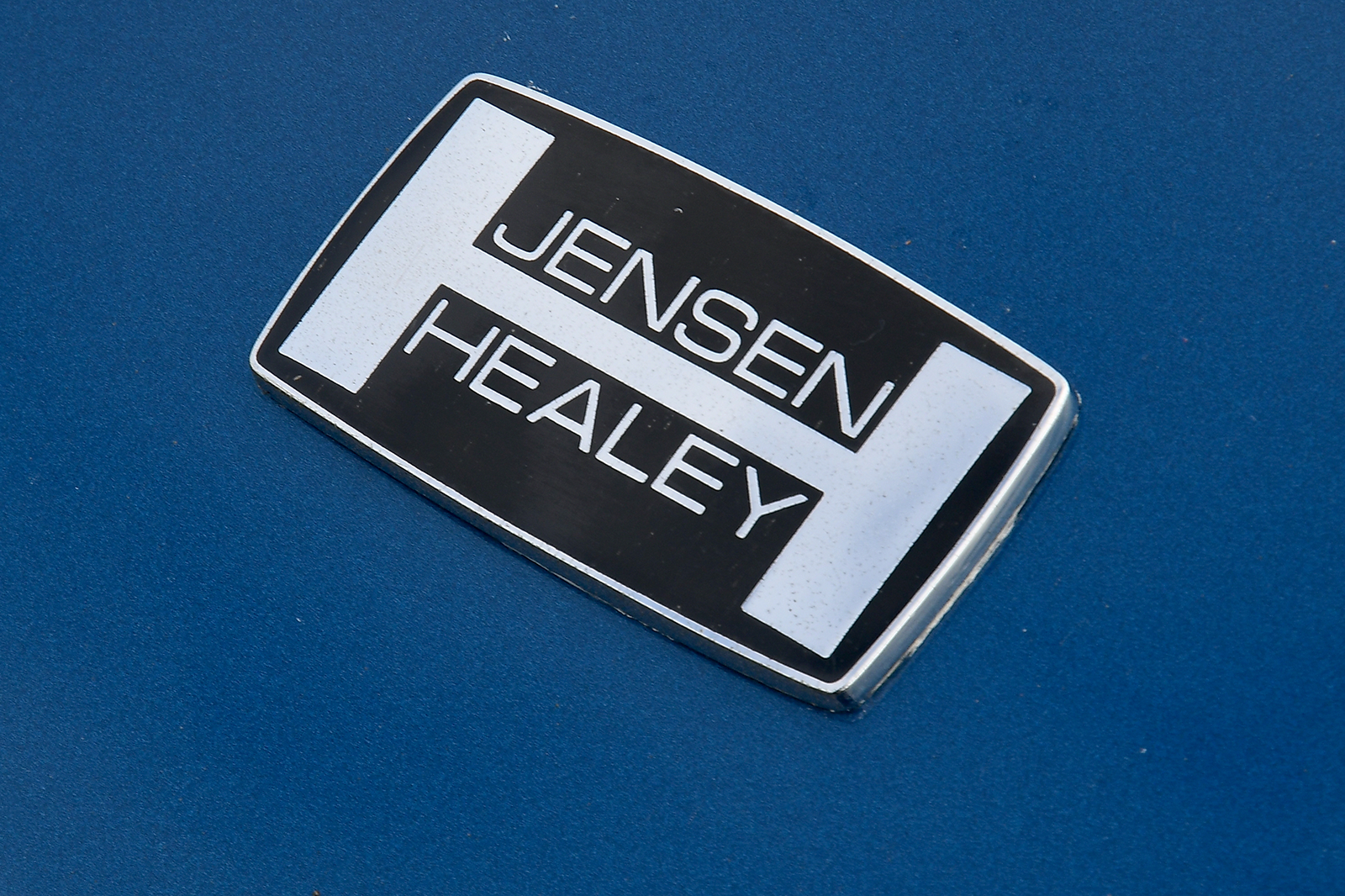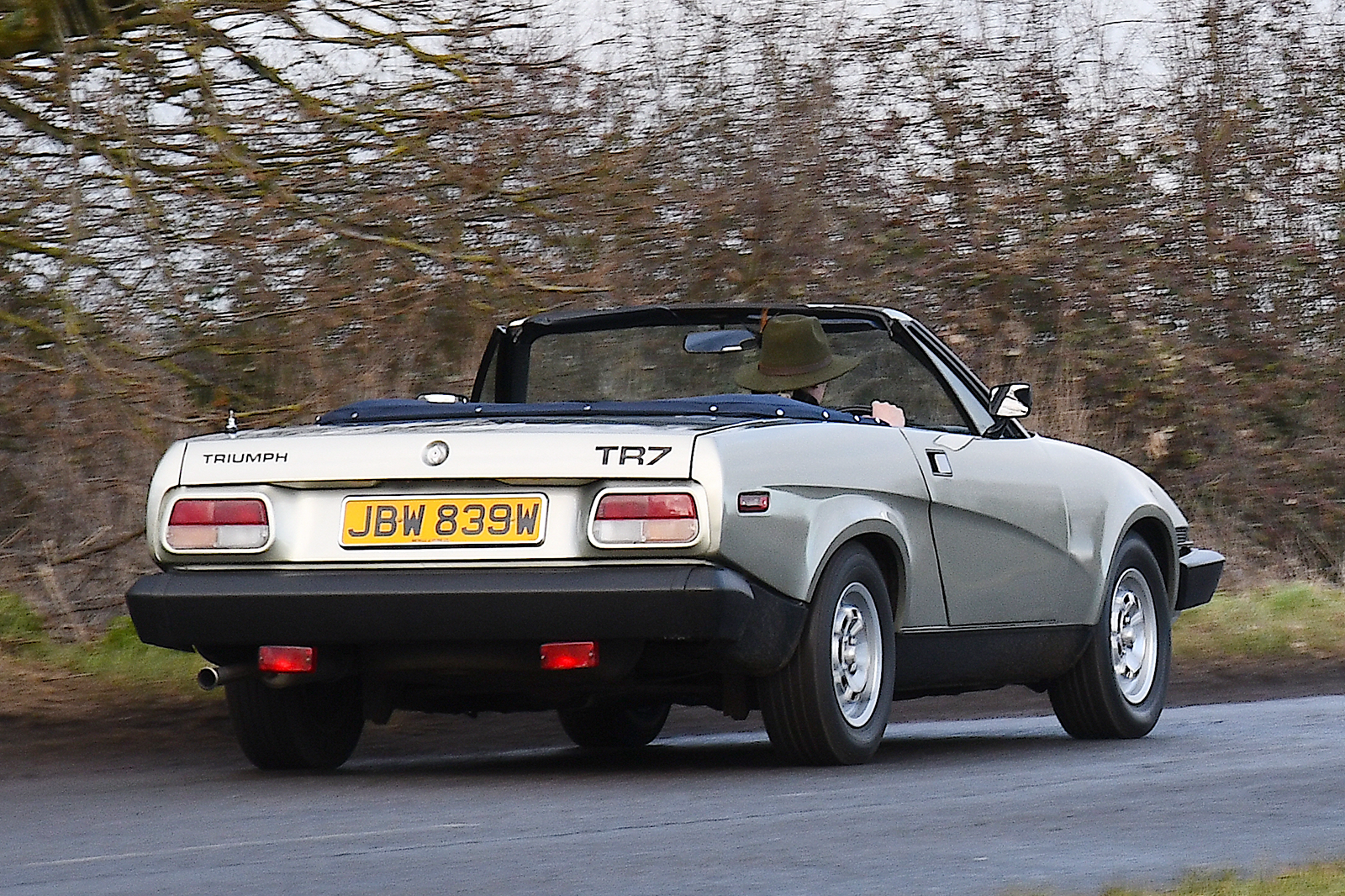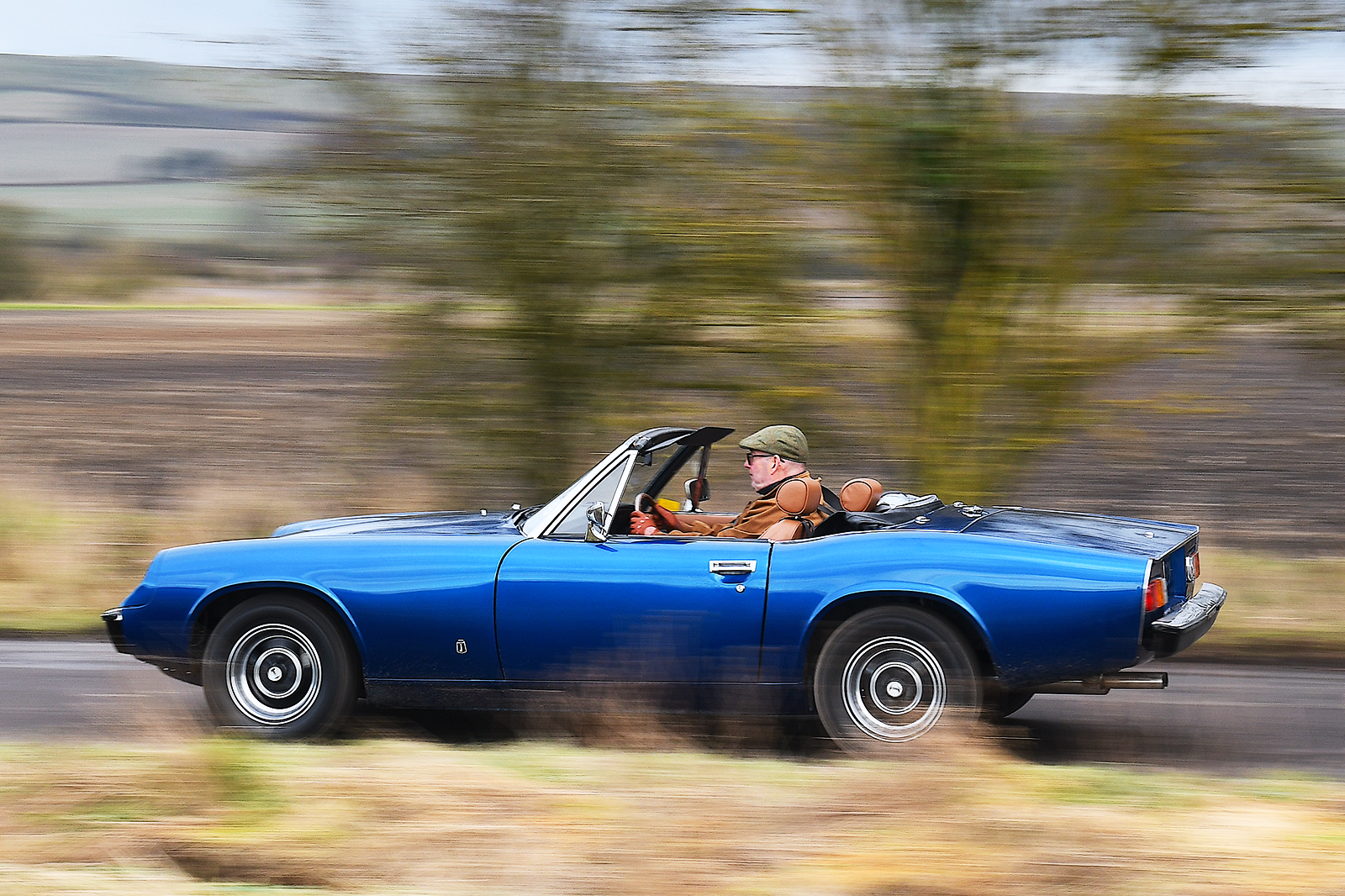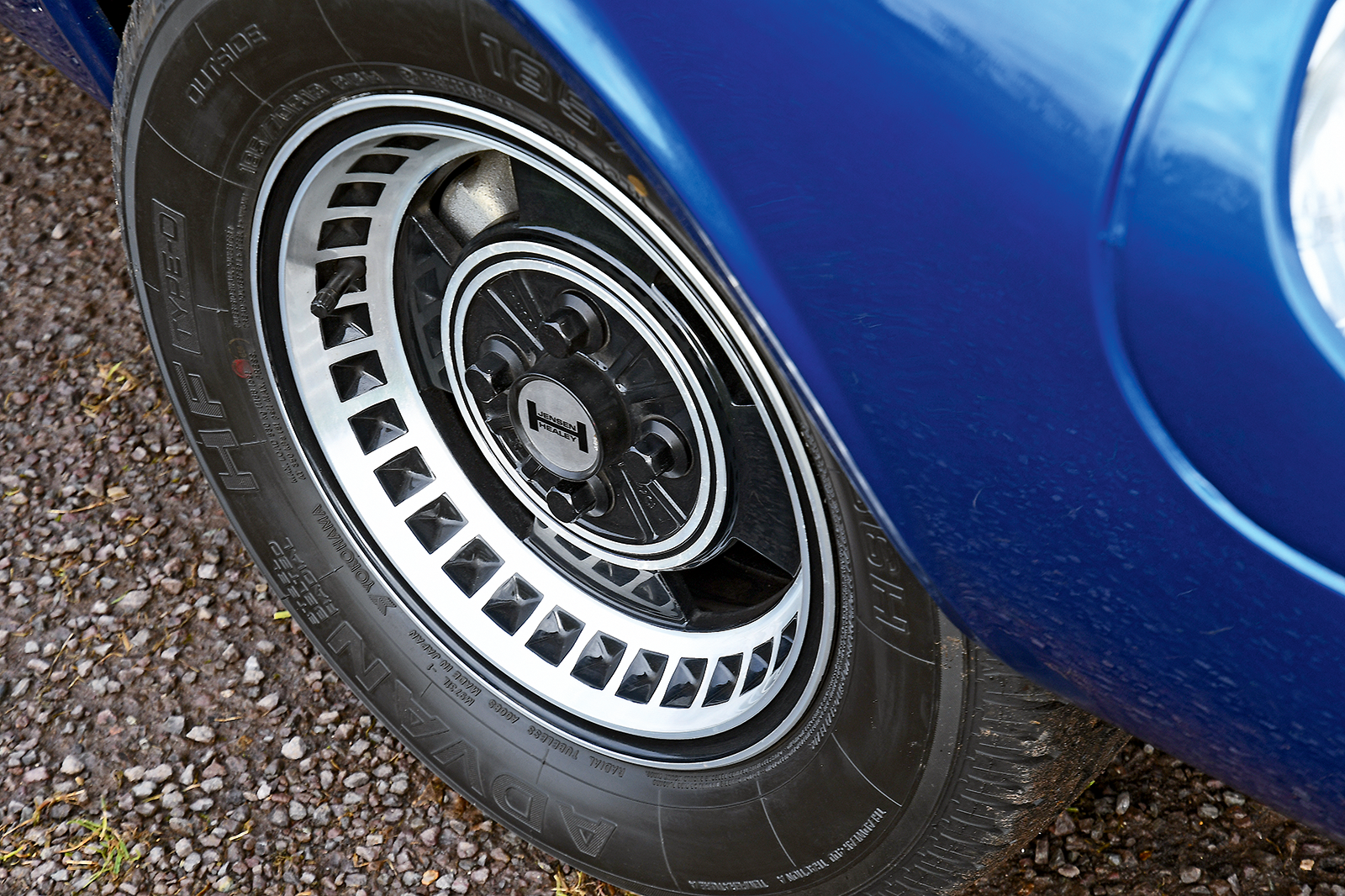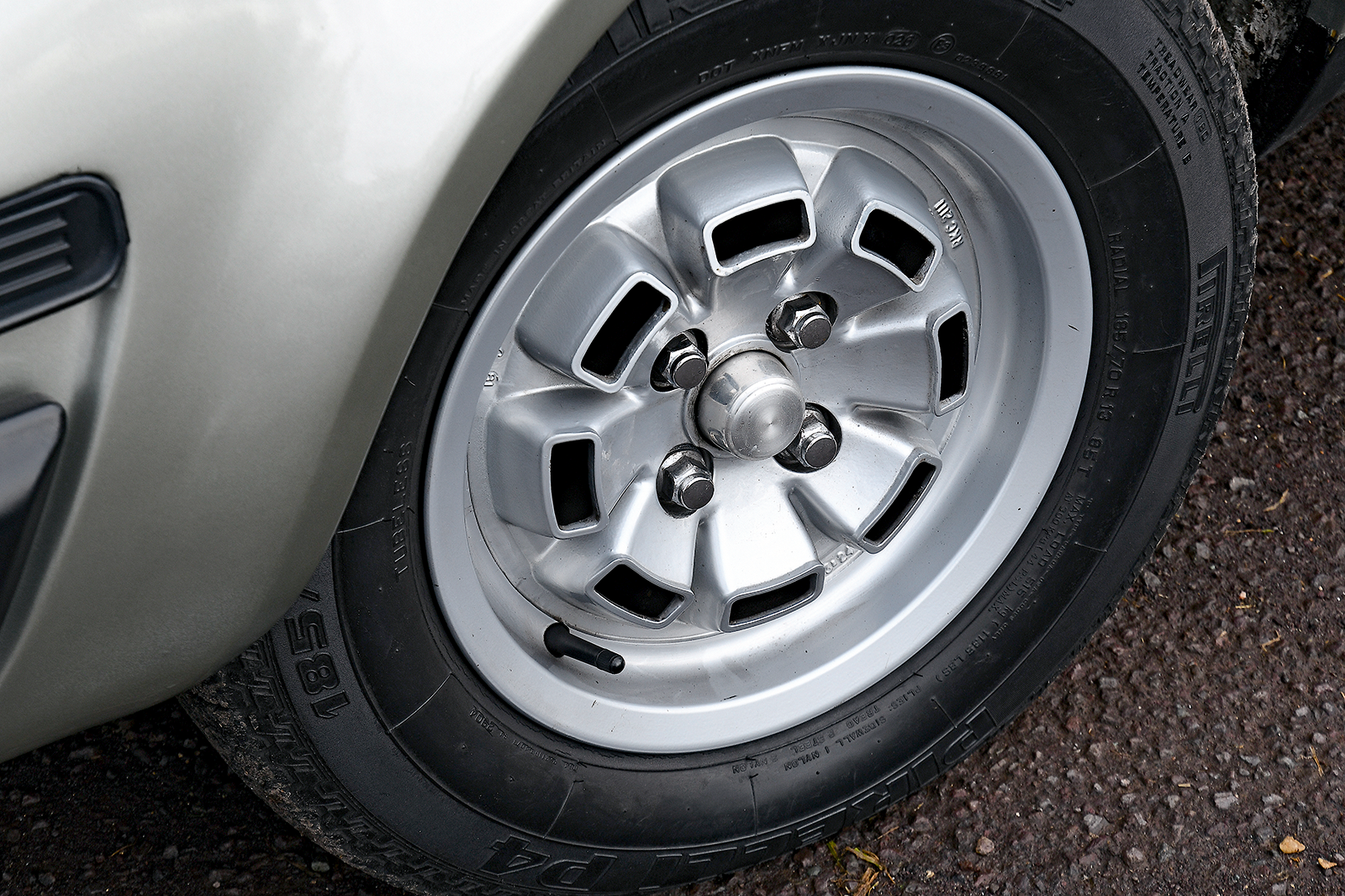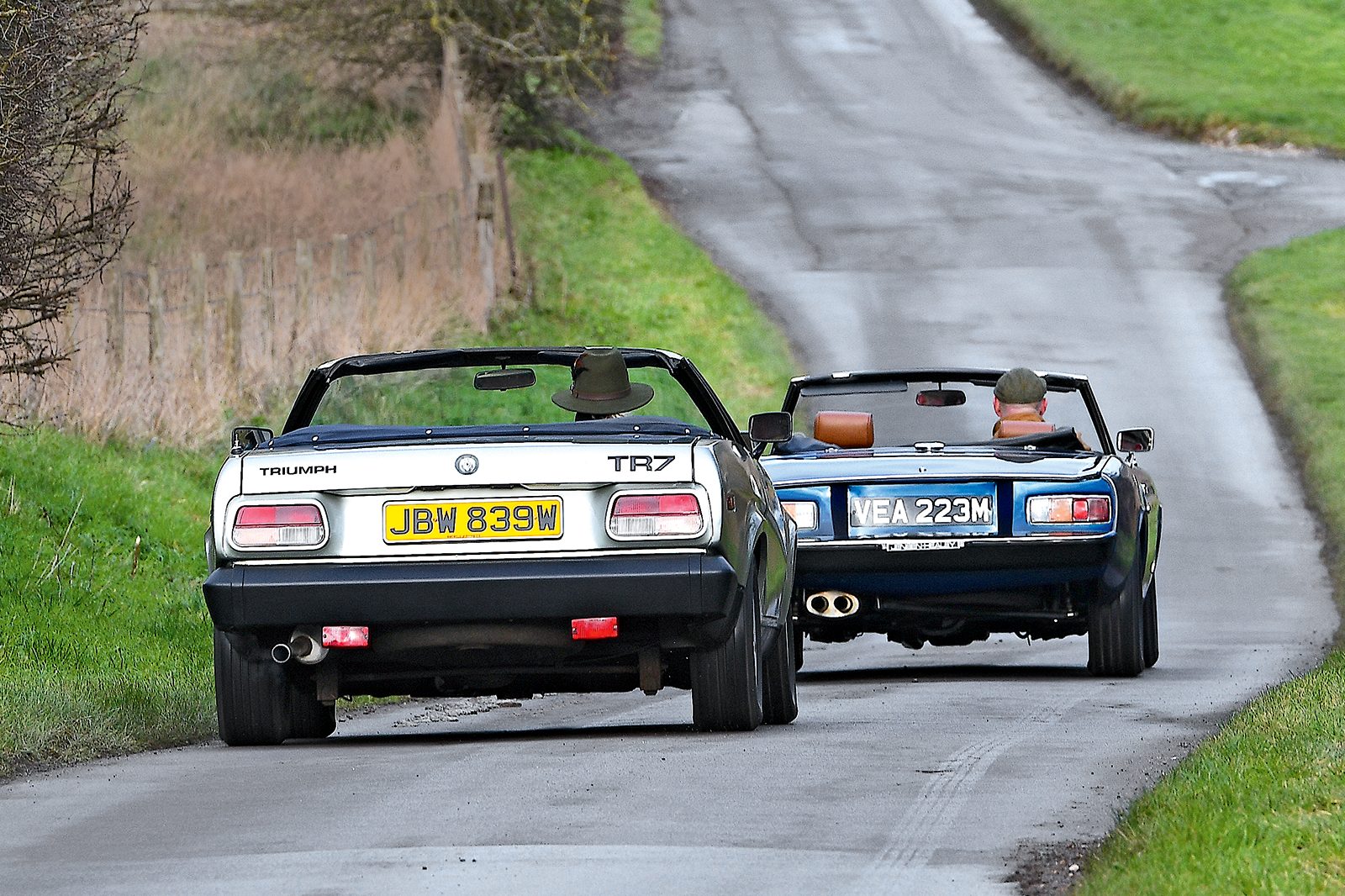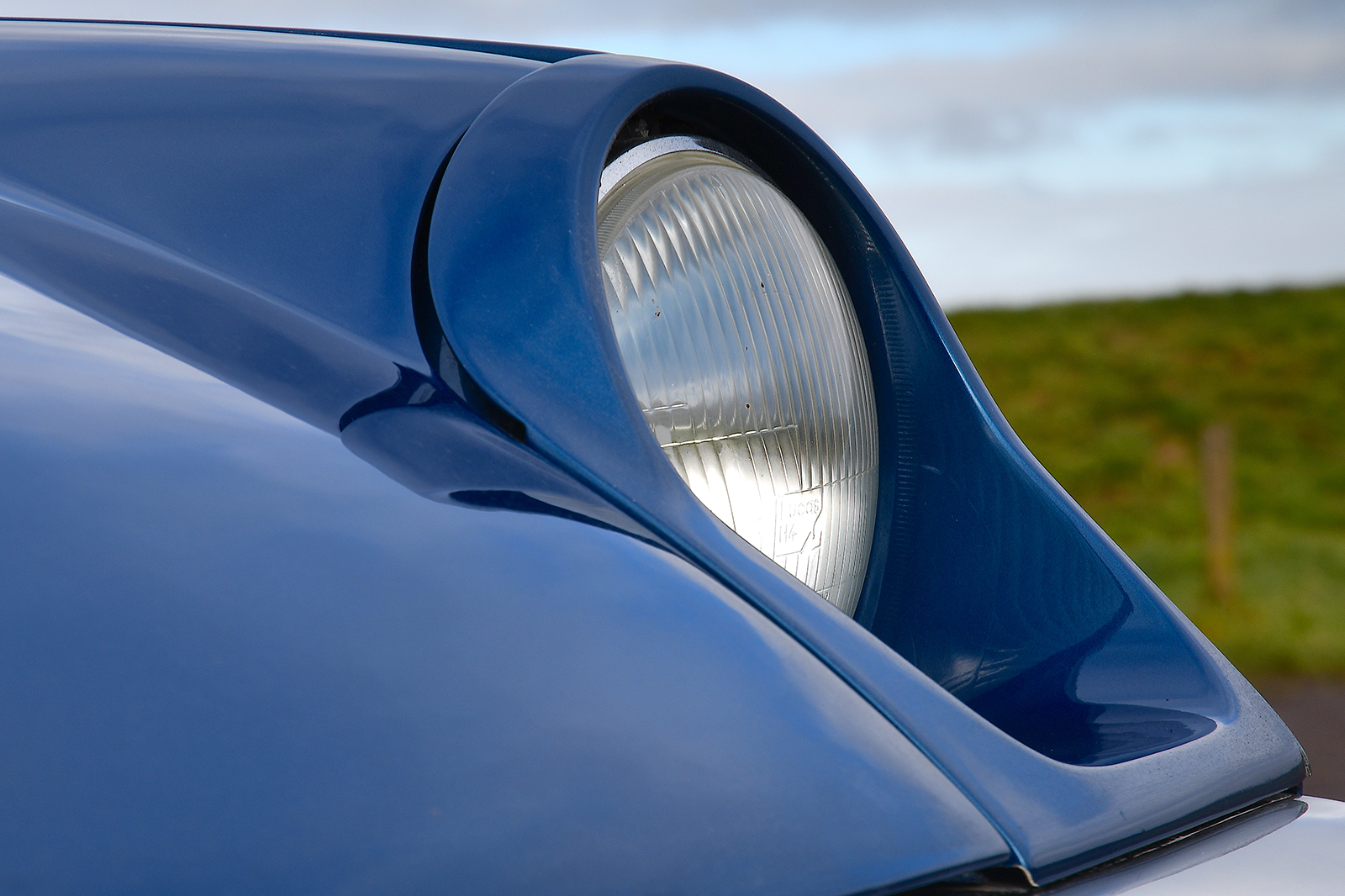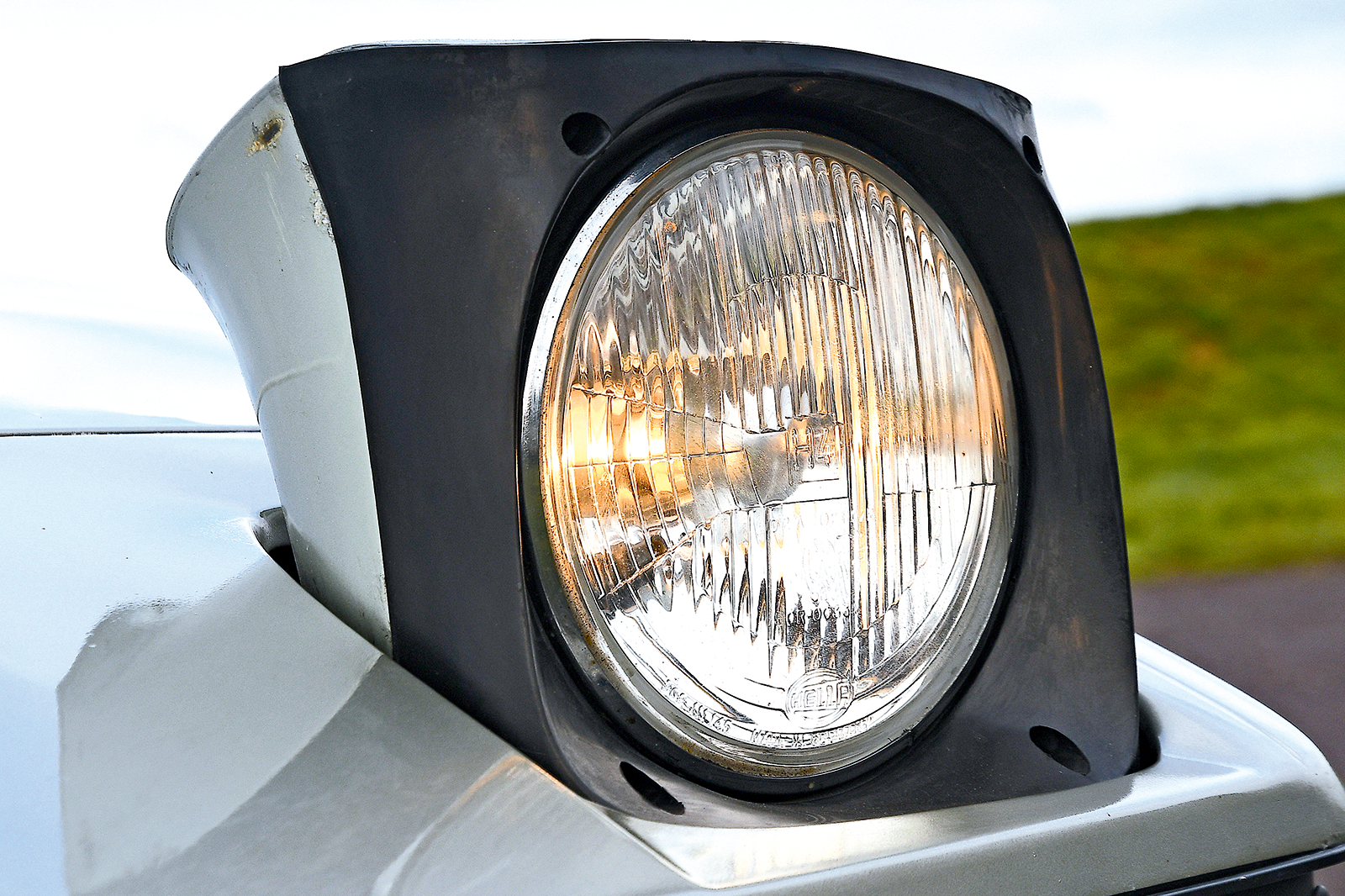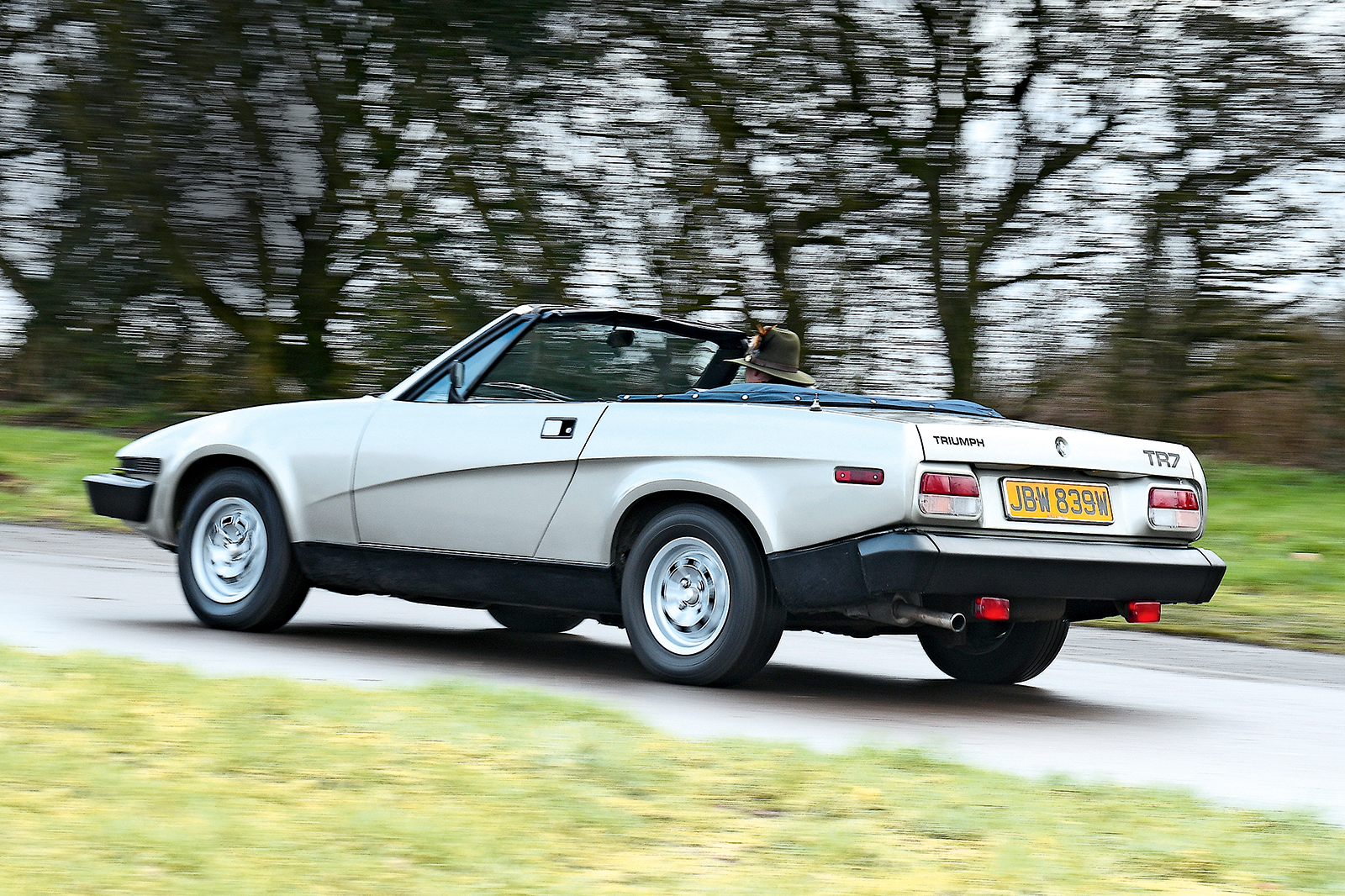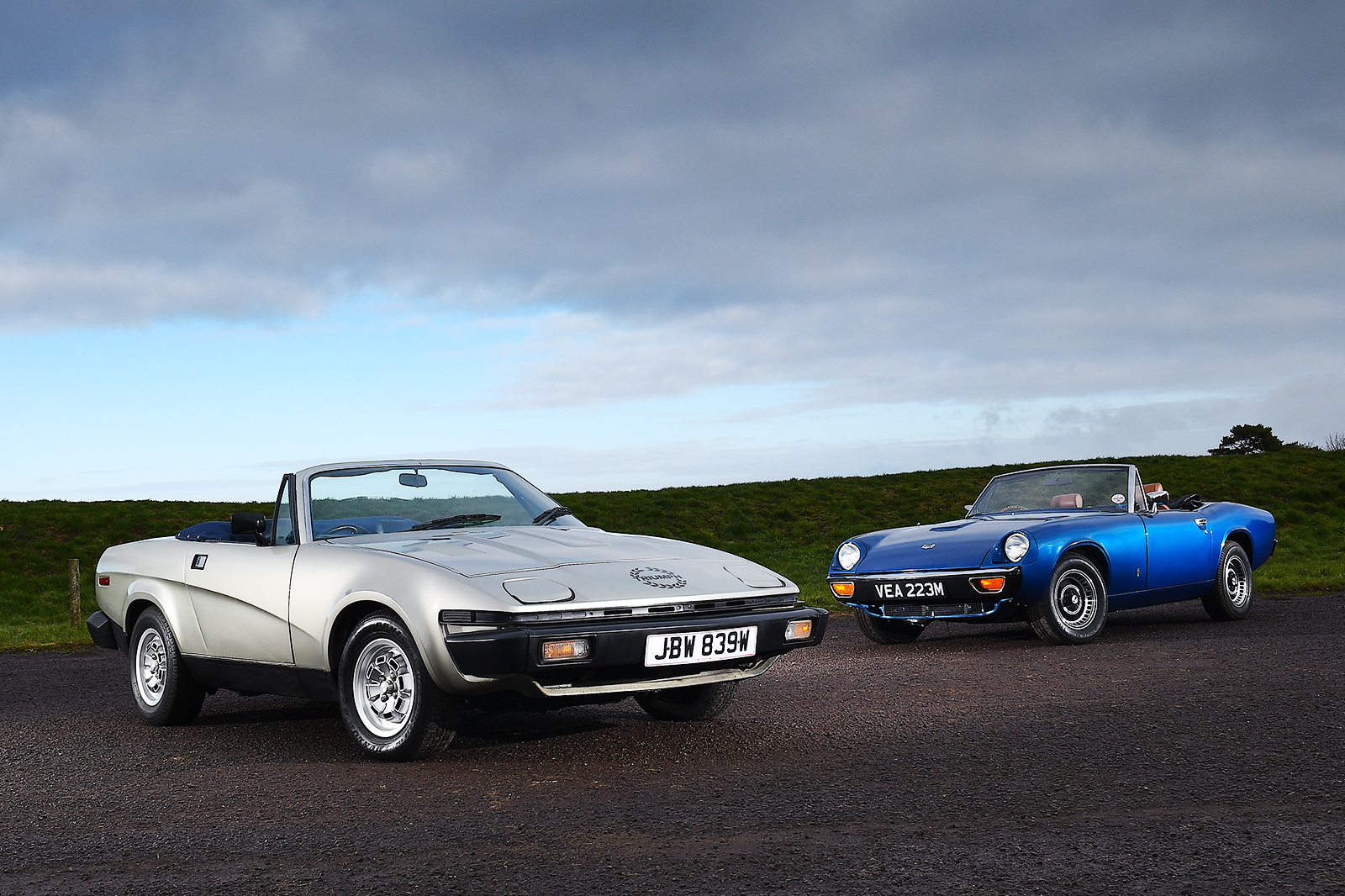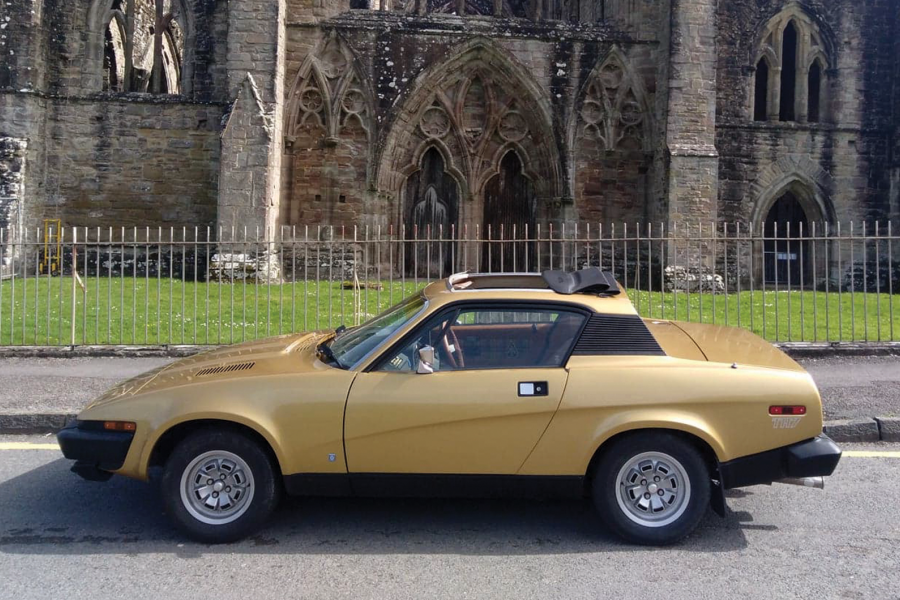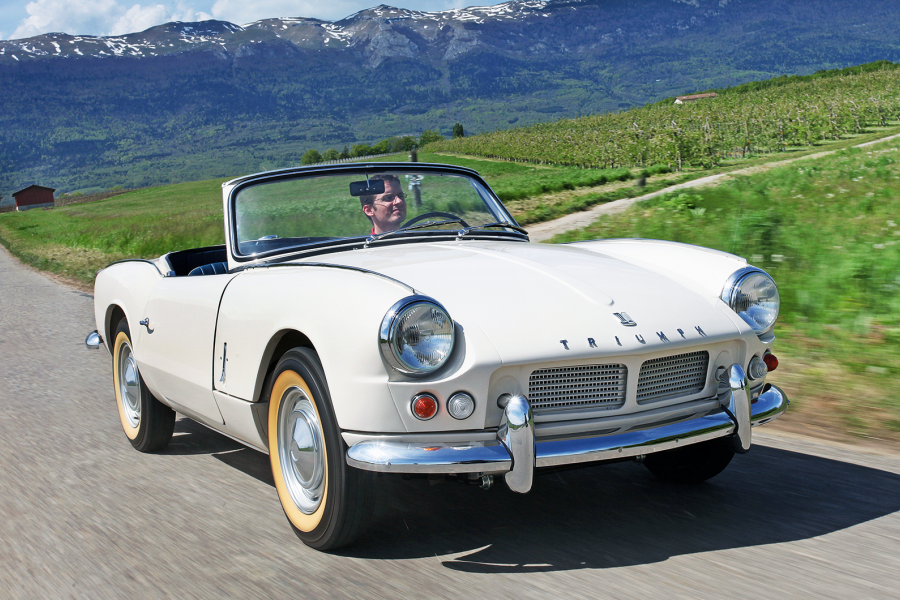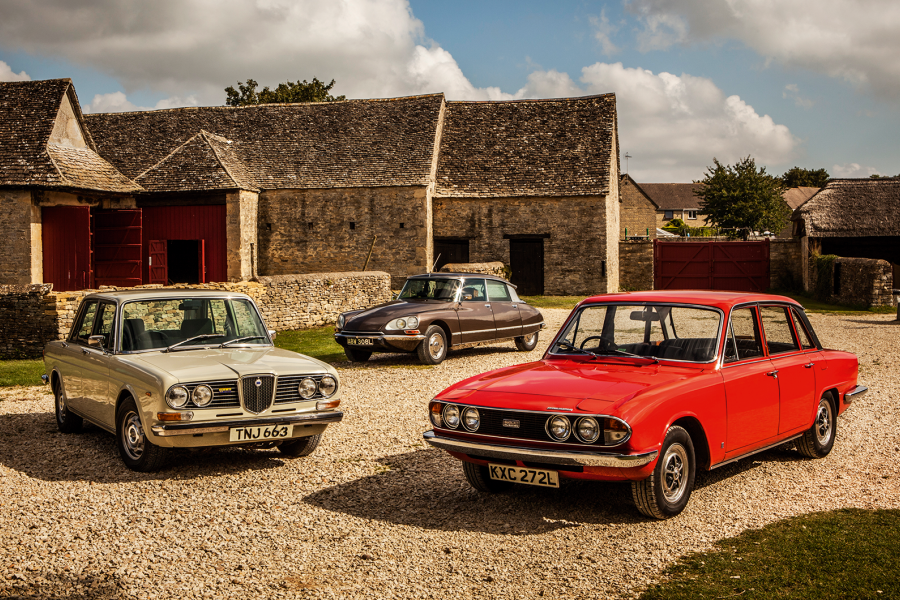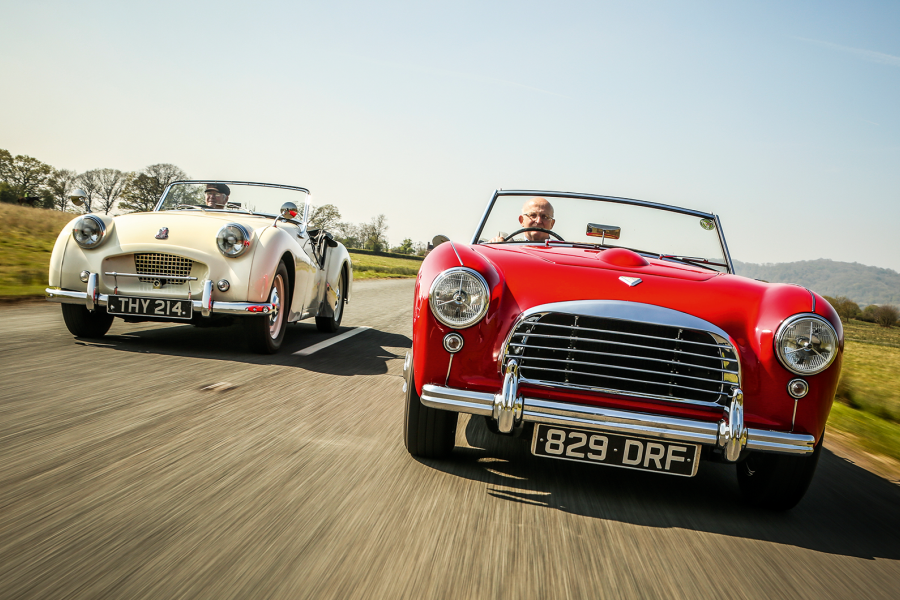The offset driving position is a little bit cramped, its ergonomics are somewhat chaotic and the uprated clutch is rather abrupt, but its torsional rigidity is vastly better than its six-cylinder predecessors.
Blatant scuttle shake and chassis flex? Nope, none of that here.
The Triumph’s charms are more subtle.
There is far more room in this car and it has the best, most straightforward driving position of any TR.
The Triumph TR7 (closest) has a softer ride than the Jensen-Healey
The dash might be a touch more Lego-like and chunky, but its instruments are all visible and it even has a clutch-foot rest and padded centre console for your lazy leg.
Given that the convertible wasn’t even in the original plan, its structural integrity is surprising.
Once it’s awake and on cam, the Jensen’s Lotus ‘twink’ inhales deeply through vocal Dell’Orto carbs and bellows through its twin exhausts.
Exposed headlights on the Jensen-Healey
The Getrag dog-leg five-speed ’box is a bit vague and clingy, but the steering is direct and consistent across the rack.
The ride is firm and it corners flat: punt the Healey through a corner with bravado and you can clearly feel its limits. Nevertheless, it’s a hoot.
Dynamically, the TR7 is an all-rounder of the MGB and Sunbeam Alpine school.
It rolls slightly more than the Healey, but the pay-off is a more forgiving ride.
Pop-up headlamps give this classic Triumph more of an ’80s feel than the resolutely ’70s Jensen
The twin SUs make initial throttle response and pick-up more immediate, but the steering lacks the Healey’s ultimate precision.
Being hyper-critical, perhaps there is some light numbness in the middle of the rack when going from lock to lock, but the TR7 does have a tighter turning circle.
Swooping through the countryside, the only noise is a softly sporty exhaust note.
Having been frustrated by many a tired BL five-speed, this TR7’s gearbox is a delight – light, smooth and positive – and at legal speeds the chassis’ cornering limits are out of reach on today’s battered, greasy roads.
The Triumph TR7 is an engaging, affordable classic sports car
Do these cars still deserve to be burdened with such terrible reputations? No.
On a day when the bitter wind has been all too eager to brandish its sharp teeth, they remind you of the pleasures of driving a sports car in wintry weather.
I was hoping to like the Jensen-Healey due to its Warwick ancestry and, as a sucker for an enjoyably rugged roadster, I certainly do.
Yet it is the TR7 that comes as the real surprise here: it’s an eminently usable sports car that is as easy to drive as it is to enjoy. Find the right one and you’ll wonder why they’re still so affordable.
Images: John Bradshaw
Thanks to: Robert Heydon, Jensen Owners’ Club; Richard Connew, World Wide TR7 TR8 Owners’ Club
Factfiles
Triumph TR7
- Sold/number built 1975-’81/112,368 (all TR7s)
- Construction steel monocoque
- Engine iron-block, alloy-head, sohc 1998cc ‘four’, twin SU carburettors
- Max power 105bhp @ 5500rpm
- Max torque 119lb ft @ 3500rpm
- Transmission five-speed manual, RWD
- Suspension: front independent, by MacPherson struts rear live axle, trailing arms, tie rods, coil springs, telescopic dampers; anti-roll bar f/r
- Steering rack and pinion
- Brakes disc front, drums rear, with servo
- Length 13ft 8½in (4178mm)
- Width 5ft 6¼in (1681mm)
- Height 4ft 1½in (1257mm)
- Wheelbase 7ft 1in (2159mm)
- Weight 2500lb (1134kg)
- 0-60mph 11.4 secs
- Top speed 109mph
- Mpg 29
- Price new £6382 (1981)
- Price now £7-12,000*
Jensen-Healey
- Sold/number built 1972-’75/10,926
- Construction steel monocoque
- Engine all-alloy, dohc 1973cc ‘four’, two Dell’Orto twin-choke carburettors
- Max power 140bhp @ 6500rpm
- Max torque 130lb ft @ 5000rpm
- Transmission four/five-speed manual, RWD
- Suspension: front independent, by double wishbones rear trailing arms, live axle; coil springs, telescopic dampers f/r
- Steering rack and pinion
- Brakes disc front, drums rear, with servo
- Length 13ft 6in (4115mm)
- Width 5ft 3¼in (1605mm)
- Height 3ft 11in (1219mm)
- Wheelbase 7ft 8in (2337mm)
- Weight 2127lb (965kg)
- 0-60mph 7.5 secs
- Top speed 123mph
- Mpg 24
- Price new £1810
- Price now £15-25,000*
*Prices correct at date of original publication
Enjoy more of the world’s best classic car content every month when you subscribe to C&SC – get our latest deals here
READ MORE
Datsun 240Z vs Triumph TR6: the battle for America
Driving the cars of The Saint: Volvo P1800, Jaguar XJ-S, Jensen Interceptor and Volvo C70
Austin-Healey 100S coupé: the boss’ choice
Simon Charlesworth
Simon Charlesworth is a contributor to Classic & Sports Car
